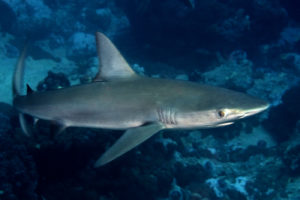By Devina Thiono
Note from the Editor: Students interested in biomimicry can also check out Biomimicry.org
Animals, and nature in general, have been able to withstand various conditions without much help. Each creature has adapted in such a way that they are able to function seamlessly where they live. This quality is what inspired the field of biomimicry. Biomimicry is the practice of studying organisms throughout nature and mimicking their system, such as their structures and behavior, to solve design problems that humans face. The problems can vary from building structure, transportation design, to what we are going to discuss today – the biomedical field.

In the biomedical field, the rise of drug-resistant organisms is an ongoing concern. One of the causes of drug-resistant organisms is the extensive use of heavy antimicrobials in hospitals. Although hospital patients often need antimicrobials to prevent them from getting infection, prolonged use of antimicrobials can give rise to organisms which are resistant to that specific antimicrobial. So, how can we reduce the number of hospital-acquired infections without having to rely on using more harsh chemicals? A group of people, which later formed the company Sharklet Technologies, turned to nature for a solution. Specifically, they studied the Galapagos shark (pictured above). They found that sharks can keep their skin clean from algae build-up. This is due to the unique diamond pattern that makes up sharks’ skin denticles which discourages organisms from settling on them. The group came up with Sharklet micropattern (pictured below) which mimics shark’s skin. They showed that this pattern was able to reduce microorganisms’ growth by 90% compared to a smooth surface. As one solution to hospital-acquired infections, the Sharklet micropattern has been used to coat catheters to reduce bacterial growth. The same shark-inspired micropattern is also being developed for a wound dressing that encourages faster wound healing.

Besides sharks, the Californian sandcastle worm (pictured below) has also inspired the biomedical field. The sandcastle worm secretes a substance that can glue sands together to build a protective structure for itself. The adhesion works in a wet environment and can set quickly, which is ideal for surgical glue! Oftentimes, surgical glues can’t stay in place due to blood and constant movement inside the body. The adhesive substance that the Californian sandcastle worm secreted inspired the development of Setalum – a glue that can withstand wet and dynamic environments to seal wounds in the body.

From these two examples, we see how humans can look to nature to answer problems that could advance human health. For more examples of nature-inspired technologies, you can explore AskNature. So, before you think it’s impossible, try looking around in nature!
